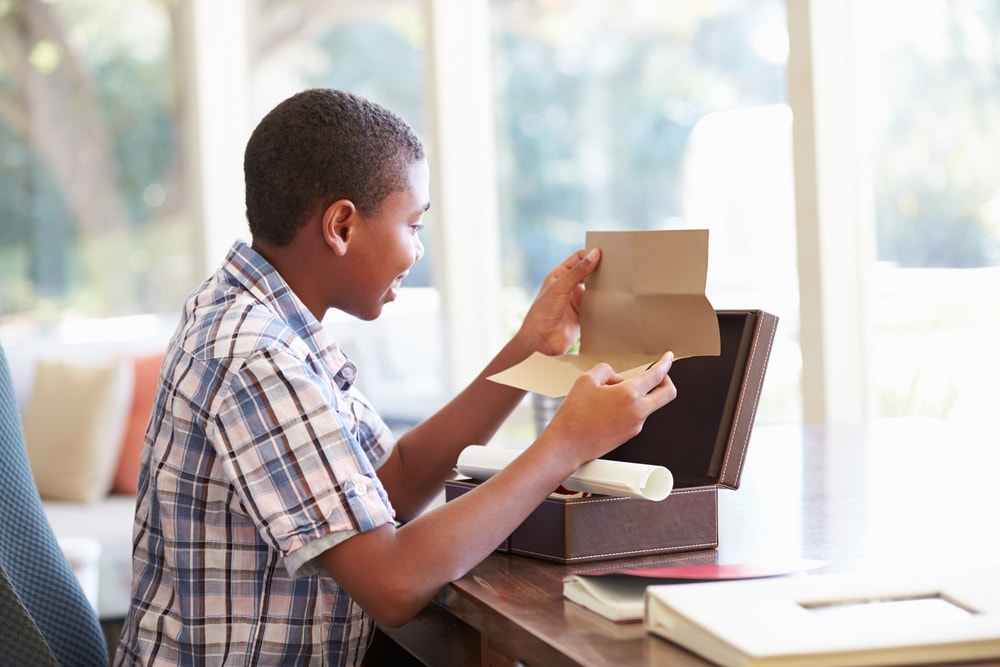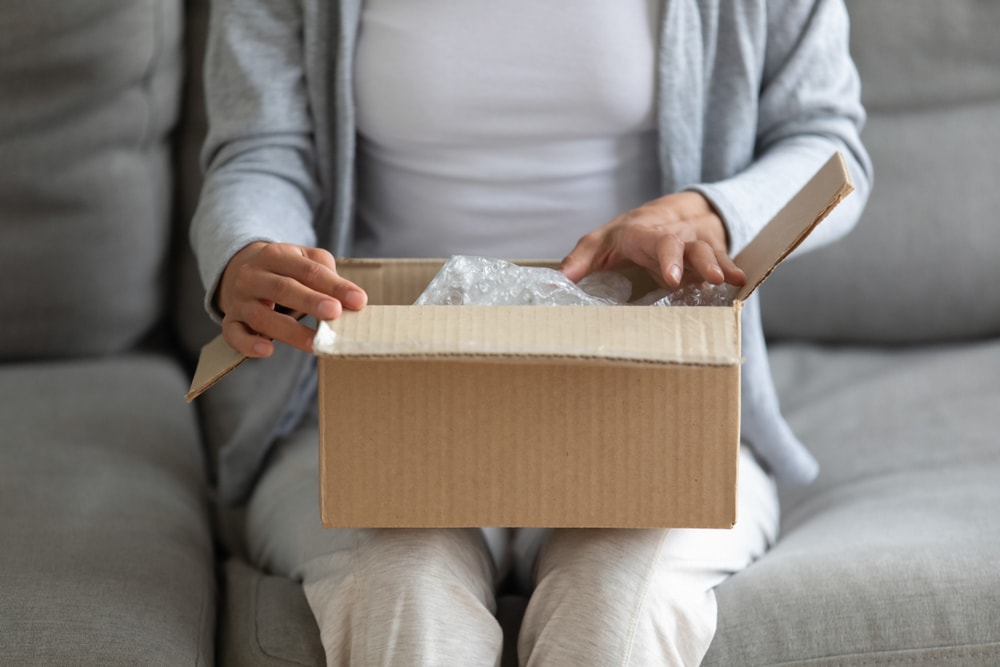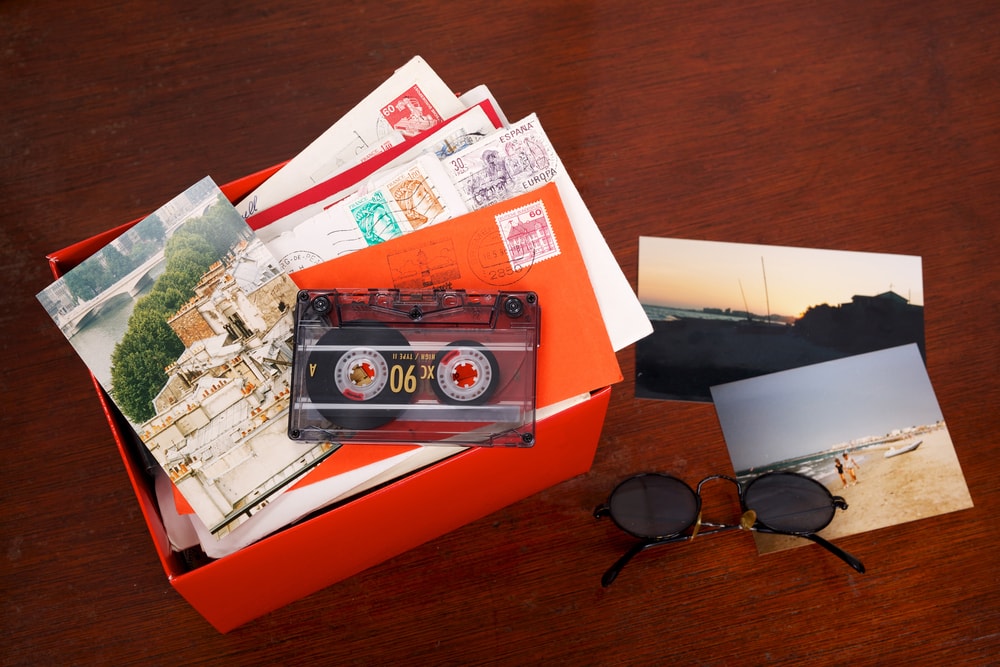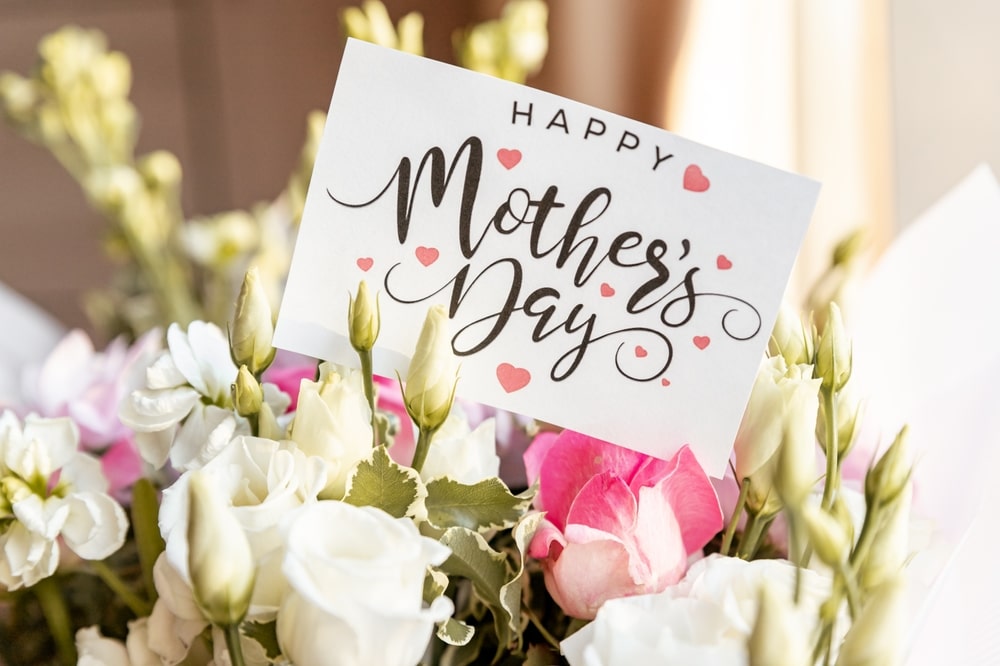Sometimes, words aren’t enough to fully express what you feel or say what you mean. In the times when words are inadequate, participating in healing rituals and actions plays a key role in helping you grieve well and express what can’t be said. One healing action you might consider – either for yourself or your entire family – is creating a memory capsule.
What is a Memory Capsule?
Similar to a time capsule, a memory capsule is a container that holds precious mementos, photos, notes, and other memorabilia associated with a loved one. Once the capsule is complete, you hide it away until a specified time. Then, either alone or together with family, you open the capsule, remembering the person you love and sharing those cherished memories with each other.
But why should you consider a memory capsule? Remembrance is a key part of grieving well and creating a memory capsule is one way you can remember, reminisce, and embrace your loved one’s life. It will allow you to gather some of your most treasured items and put them in one place. You can go back to the capsule as often as you wish, or you can wait a specified amount of time. Regardless of what you decide, when you open the box, tender memories will flood you with love and help you lovingly remember and grieve for the person you’ve lost.
How to Create a Memory Capsule
With a few simple steps, you can create both a memory capsule and a meaningful activity for your family.
1. Determine where you’ll store the capsule.
First, you must decide where you will be storing the capsule. Whether you decide to store it indoors or outdoors will affect what kind of container you use and what types of items you place inside. So, before you can really begin, you need to determine how you plan to store your memory capsule. Also, select a person to take charge of the capsule. This person will be responsible for storing the container and bringing it out of storage at the appropriate time.
2. Choose your container.
Once you’ve determined where you plan to store your capsule, it’s time to select the type of container you intend to use. If you are planning to keep the memory capsule indoors, then you could select a box, a plastic container, a jar, or some other container that is easily storable.
However, if you plan to keep the capsule outside or you intend to bury it, there are a few things to consider. For outdoor safekeeping, find a container that is non-biodegradable, like something made of metal. Water, dirt, pressure, and critters won’t be friendly to your capsule so make sure that it’s strong, weather-proof, and watertight.
If you are making this a family activity, discuss together what kind of container you’d like to use.
3. Decide what to include.
Next, it’s time to decorate your container (if you wish) and gather your memories. Since this activity is meant to be part of a healing ritual, you might write a note expressing what you miss about them. Record a favorite memory. Gather photos, drawings, trinkets, clothing, or other cherished items. Find the items that are meaningful to you and place them in the container. With kids, have them write a note or create a drawing for the capsule. You could even write a note to your future self, saying what you’re feeling now and where you hope to be when the capsule is opened.
If you are planning to store your capsule outdoors, consider using good paper and permanent ink. Try not to use paper clips, staples, or rubber bands because they will rust or break with age. Consider placing photos and other paper items into plastic sleeves to further protect them.
WARNING: Make sure you don’t include flammable materials or anything else that may cause damage, such as liquids, food products, matches, or lighters.
4. Set a date.
Typically, capsules are left closed for several years, but you can do whatever works best for your family. For example, if you are putting together a memory capsule for a lost loved one’s birthday or at Christmas or Thanksgiving, you can open it the following year or several years down the road. The most important thing is to select a time frame and make sure that everyone participating knows what the time frame is. That way, each person can tailor their offerings to meet the time frame, if that’s needed.
5. Seal your container and store it.
Once everyone has had a chance to add their personal contributions to the memory capsule, all that’s left is sealing the container and storing it away until your agreed upon date. If you’ve made the memory capsule a family activity, make sure to gather everyone together (or use a video call) to make sure everyone is included in the sealing. You can even write a “Do not open until” date on the outside. For extra protection, seal the container with tape or a lock.

Before you disperse, give each other hugs and best wishes. This activity is not only about healing from your loss but about finding support in each other as you all mourn the loss of someone you love.
Continuing Your Grief Journey
Now, all you have to do is wait until the agreed upon date and do the work of grief. While creating a memory capsule will help you participate in a healing ritual and remember your loved one, it’s not a “one-and-done” kind of thing. As you grieve, you will need to continue to talk about your loss, participate in healing rituals (like journaling, attending a funeral or memorial, lighting candles, praying, etc.), and face the grief you feel.
Dr. Alan Wolfelt, a nationally respected grief counselor and educator, says this about grief: “From my own experiences with loss as well as those of thousands of grieving people I have companioned over the years, I have learned that we cannot go around the pain that is the wilderness of our grief. Instead, we must journey all through it, sometimes shuffling along the less strenuous side paths, sometimes plowing directly into the black center.” So, as you confront your emotions head on, you will begin to actually deal with them and find a way to move toward healing and eventually reconciliation.

Just remember, you’re not alone on the journey. Lean on your loved ones. Talk to your family and/or friends. While they may not always understand what you’re thinking or feeling, they love you and can be a source of support through the grief journey ahead. Take your time – there’s no rush. You are never going to “get over” the loss of someone you love, but you can learn how to move forward and find renewed purpose and meaning in life. It may seem impossible right now, but as you do the work of grief, it will happen, little by little. Best of luck on your journey!








